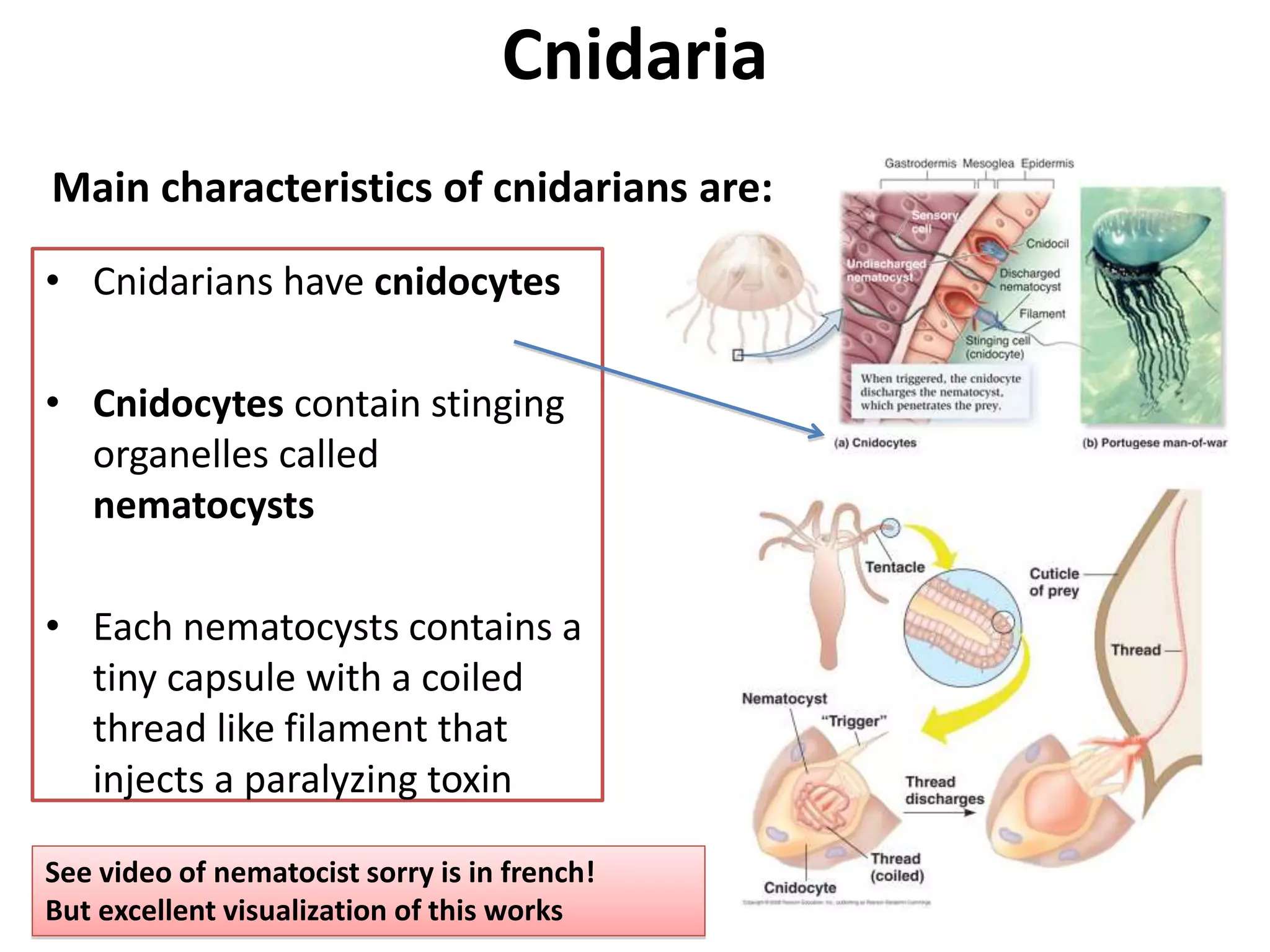- Cnidaria is a phylum of radially symmetric, aquatic animals found exclusively in marine and freshwater environments. They are distinguished by having stinging cells called cnidocytes that contain nematocysts.
- Cnidarians exhibit two basic body forms - polyps, which are typically sessile, and medusae or jellyfish, which are mobile. Many species alternate between these two forms during their life cycle.
- The phylum is divided into four classes - Hydrozoa, Scyphozoa, Cubozoa, and Anthozoa. Hydrozoans and scyphozoans have both polyp and medusa stages while anthozoans are exclusively polyp forms. Cor




























